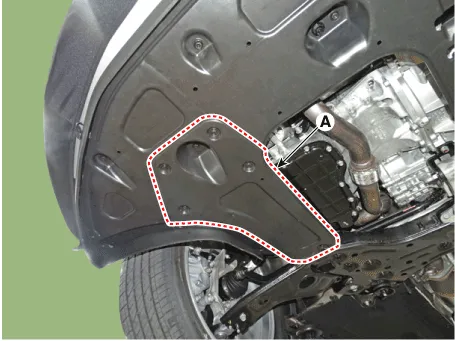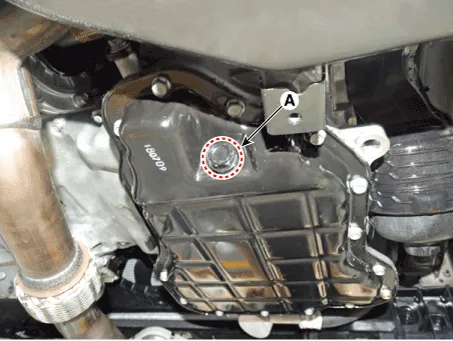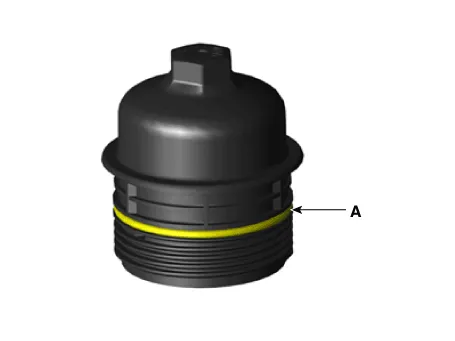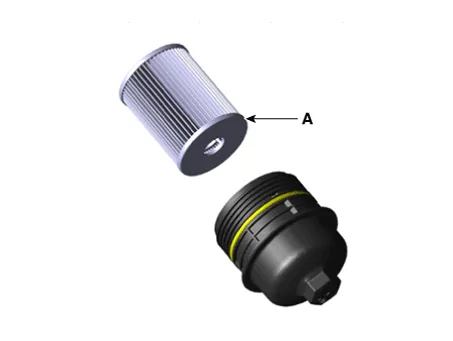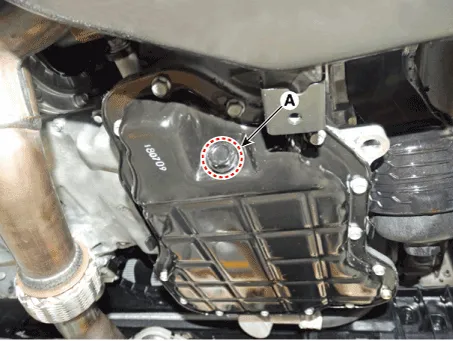Hyundai Palisade (LX2): Lubrication System / Engine Oil
Repair procedures
| Replacement |
|
|
| 1. |
Park the car on level ground.
|
| 2. |
Drain engine oil.
|
| 3. |
Replace the oil filter.
|
| 4. |
Fill new engine oil.
|
| 5. |
Start the engine and check that no oil is leaking from the drain plug
or oil filter.
|
| 6. |
Recheck the engine oil level.
|
| Inspection |
|
| 1. |
Warm up and stop the engine, and then wait for 5 minutes.
|
| 2. |
Turn the engine off and wait for a few minutes (about 5 minutes) for
the oil to return to the oil pan.
|
| 3. |
Pull the dipstick out, wipe and re-insert it fully.
|
| 4. |
Check that the oil level is between the "L" and "F" level marks on the
engine oil level gauge.
|
| 5. |
If the level is low, check for leakage and add oil up to the "F" level
mark.
|
| 1. |
Check engine oil for white turbidity or heavy contamination.
|
| 2. |
If engine oil becomes turbid and white, it is highly probable that it
is contaminated with engine coolant.
Repair or replace damaged parts.
|
| – |
API SM, ILSAC GF-4 or above
|
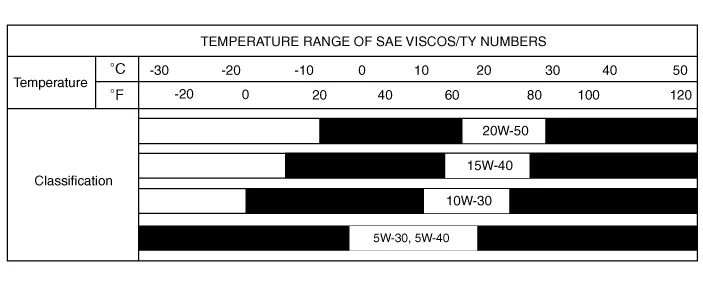
For best performance and maximum protection of all types of operation,
select only those lubricants which:
|
Engine oil flow diagram
Components and components location Components 1. Oil fliter body 2. Gasket Repair procedures Removal • Be careful not to damage the parts located under the vehicle (floor under cover, fuel filter, fuel tank and canister) when raising the vehicle using the lift.
Other information:
Hyundai Palisade (LX2) 2020-2025 Service Manual: Description and operation
Description Blind-Spot Radar is a system that measures the relative speed and distance from the following vehicles by using two electromagnetic wave radar sensors attached to the rear bumper, and detects any vehicle within the blind spot zone and gives off alarm (visual and auditory).
Hyundai Palisade (LX2) 2020-2025 Service Manual: Description and operation
Description • PDW consists of 8 sensors (front : 4 units, rear : 4 units) that are used to detect obstacles and transmit the result in three separate warning levels, the first, second and third to IBU via LIN communication.
Categories
- Manuals Home
- Hyundai Palisade Owners Manual
- Hyundai Palisade Service Manual
- Rain Sensor
- Radiator
- Description and operation
- New on site
- Most important about car



